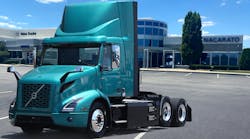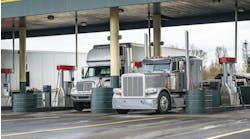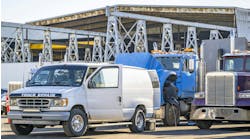Developments in the battery-electric vehicle space are happening at a fairly rapid pace. We are moving from fleets trying one or two trucks in their operations to fleets planning on replacing a percentage of their vehicles with BEVs over the next several years. Some BEV makers are moving out of the pre-production phase of manufacturing to actual production. And industry stakeholders are working together to develop solutions for charging infrastructure issues.
As I said, progress is being made, and I hope truck dealers have already begun working on their strategy when it comes to selling and servicing BEVs. While dealers don’t typically have fuel islands for internal combustion engines, they are going to need to consider adding charging capability at their locations. Car dealers have already done this to ensure electric cars are charged for test drives and recharged following service events. While there are fewer test drives at truck dealerships, there still are some, and many dealers have rental fleets that will undoubtedly contain some BEVs needing to stay charged.
See also: Dealer opens first public commercial vehicle charging station in Michigan
Dealers also need to begin thinking about changes they may need to make to their service shops to work on the high-voltage batteries that power BEVs. Will they designate a specific area in their existing shops for BEV service—or will they erect a separate building solely dedicated to working on BEVs? There is no right or wrong answer, but facilities questions need to be answered.
And, of course, there will be the need to make sure technicians are properly trained to work on these vehicles efficiently and safely. Lock-out/key-out procedures will need to be developed to make sure the high-voltage batteries are disabled before work begins on the BEVs. While technicians will see some components they are familiar with, such as tires and brakes, they will need to be trained in servicing the components that are unique to BEVs.
See also: Working together to ensure EV servicing safety
There is no consensus on how many fewer components the BEVs will have when compared to internal combustion vehicles, but we can all agree there will be fewer moving parts in a BEV. Some portion—in many cases a big portion—of a dealer’s profits come from parts and service. Dealers need to begin thinking about how they are structured and what changes they may need to make in their operating model to stay relevant as we transition to a zero-emission future.
The good news is they do not have to do this alone. The Technology & Maintenance Council is already working on recommended practices for servicing BEVs safely. Groups like state trucking associations can be great places to meet with other industry stakeholders to learn best practices and get answers to your questions. The American Truck Dealers also is another great resource for dealers as its mission is to be “the premier source for advocacy industry relations and education.”
And, of course, the NACFE team is always happy to talk with any industry stakeholder about what we know about BEVs. We’ve published several guidance reports on electric trucks and last year’s Run on Less–Electric provided a lot of information on real electric trucks delivering freight over real routes.
For years, fleets have relied on dealers—for information and advice to help ensure they got the right vehicle for their operations and that those vehicles are maintained well. We know the future is going to be different, although no one is clear on exactly what it will look like. But one thing is certain, dealers can’t wait until the future gets here to plan for it. Discussions need to start right now about what the future might look like, and plans need to be developed for a variety of scenarios so, that when the time comes, dealers will be positioned to be a vital part of the electric-truck future.
Michael Roeth has worked in the commercial vehicle industry for nearly 30 years, most recently as executive director of the North American Council for Freight Efficiency (NACFE). He serves on the second National Academy of Sciences Committee on Technologies and Approaches for Reducing the Fuel Consumption of Medium and Heavy-Duty Vehicles and has held various positions in engineering, quality, sales, and plant management with Navistar and Behr/Cummins.




